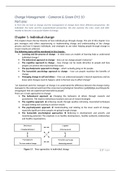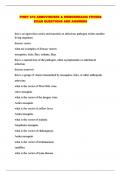Samenvatting
Making Sense of Change Management - Cameron & Green - Summary CH1 to CH10
- Vak
- Instelling
- Boek
An extensive, but simply written summary that includes illustrations of models and theories. This summary will lead you through the 10 chapters of Change Management and will make you understand the topics that are being discussed. Important aspects of the book are highlighted and explained carefull...
[Meer zien]













